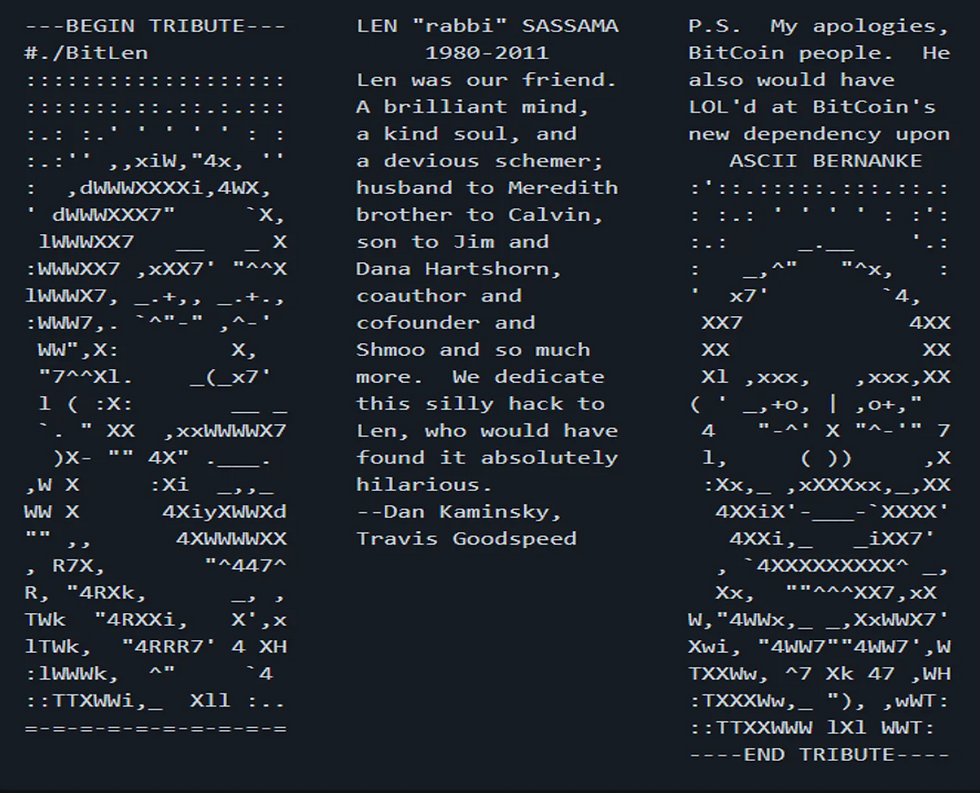What are Bitcoin NFTs
- Daniel Jungen
- Mar 22, 2023
- 5 min read
Updated: Apr 4, 2023

Bitcoin NFTs, also known as Bitcoin Ordinals, have gained traction in the broader crypto community since early 2023. The following article explains what Bitcoin NFTs are, how they are created, and where they can be purchased.
Note: The terms Bitcoin NFTs and Bitcoin Ordinals are often used interchangeably. This article uses the term Bitcoin NFTs for easier understandability, even though the term is technically inaccurate.
What are Bitcoin NFTs
NFTs, or non-fungible tokens, have taken the world by storm. These digital assets use blockchain technology to create digital scarcity and uniqueness. They can represent anything from art and music to games and collectibles. Originally, the NFT hype started on the Ethereum blockchain and has since spread to other smart-contract blockchains like Solana, Avalanche, and Polygon. Bitcoin, using a simpler, less error-prone programming language, has been left out of the NFT craze in the past as its blockchain doesn’t offer an easy way to create NFTs.
This has changed in 2023 thanks to the Bitcoin developer Casey Rodarmor. Casey has directed an open source-project called Bitcoin Ordinals that allocates unique numbers to Satoshis (the smallest unit of Bitcoin currency) so that they can be monitored and transferred individually. This allows users to distinguish Satoshis by their numbers, similar to how dollar bills can be distinguished by their serial numbers. This way, formerly fungible units become unique Satoshis, which are the foundations for Bitcoin NFTs.
The History of Bitcoin NFTs
The idea of storing data on the Bitcoin blockchain is as old as the Bitcoin network itself. In Bitcoin’s genesis block, Satoshi Nakamoto has inscribed a message. Since then, inscribing messages onto the blockchain has enjoyed great popularity among Bitcoiners. Many have followed Satoshis example and used Bitcoin blocks to communicate to the world. In 2011, someone put two ASCII images, one of Len Sassaman (left) and one of Ben Bernanke (right), on the Bitcoin blockchain. The work of art was a tribute to early Bitcoin developer Len Sassaman who had recently died.

ASCII Art on the Bitcoin blockchain. Source
And this was just the beginning. In the last decade, Bitcoin’s whitepaper, prayers, Wikileaks document, Valentine’s Day wishes, and many other messages have been archived on the Bitcoin blockchain. But even though these messages and works of art will be visible on the blockchain forever, they can not be owned. For this, another innovation had to be made first.
How Do Bitcoin NFTs Work
The Bitcoin network is constantly evolving. One important update was the Segregated Witness (SegWit) update released in 2017. The update reduced the amount of data required to process transactions and decreased the cost for complex transactions on the Bitcoin blockchain by up to 75%. It did so by allowing 3 MB of witness data in addition to the 1 MB block limit. A later update called Taproot, released in 2021, took this one step further and removed the 3 MB witness data limit entirely, as long as the data fits in a block. In combination, the two updates theoretically allow up to 4 MB worth of space for inscription data per block. Thanks to these updates, Bitcoin transactions have become cheaper and the available space per block larger.
The crucial milestone on the way to Bitcoin NFTs, though, was the introduction of a mechanism that numbers all Satoshis. A Satoshi is the smallest unit in the Bitcoin currency. The protocol called Bitcoin Ordinals, short Ord, gives each Satoshi a unique number. These numbers enable the distinction and later transfer of individual Satoshis.
The two updates combined with the introduction of the Bitcoin Ordinals protocol now allow users
a) to include up to 4 MB of inscription (NFT) data in a single transaction
b) and track the Satoshi linked to the data across the network.
These features are all that is needed to create NFTs on Bitcoin. Users can now store NFT data on the blockchain and track its ownership.
Not Tokens but Satoshis
While NFTs on most blockchains are minted as new tokens (hence the name non-fungible tokens) NFTs on Bitcoin are inscribed into Satoshis. Satoshis are the smallest unit of Bitcoin currency, similar to cents in the dollar. One Bitcoin is equal to 100 million Satoshis. Satoshis cannot be created but only purchased or mined.
To create Bitcoin NFTs, users have to own Bitcoin (Satothis). Then, a single Satoshis is sent from one wallet to another, which results in an entry on the Bitcoin blockchain. The so-called inscriptions (e.g. image, link, video, or game) are also included in this entry and stored on the Bitcoin blockchain. This way, all the NFT data is preserved on the blockchain, making it as immutable as Bitcoin. This stands in stark contrast to many NFTs on other blockchains, which merely include a link to an outside server, where the actual NFT data is stored.
Bitcoin NFT Wallets
The unique Satoshi, now linked to the NFT, should then be stored in a dedicated Bitcoin NFT-wallet. This is important, as the Satoshi can still be spent as monetary units in a normal Bitcoin transaction, which would result in a loss of the NFT ownership. Whoever owns the Satoshi linked to the NFT is also the owner of the digital artifacts that were included in the transaction data at the Genesis transaction.
To simplify the handling of unique Satoshis and the attached Bitcoin NFT, new types of Bitcoin wallets have been developed. The group behind the Bitcoin Ordinals project has created the Sparrow Wallet which lets users store, transfer and lock individual Satoshis. Because the Sparrow Wallet has been coded with advanced users in mind, other wallets like Xverse and Hiro have come to the rescue to make the Bitcoin NFT experience more user-friendly. They enable users to receive and store their Bitcoin NFTs in a separate part of their Wallet with just a few clicks.
Creating a Bitcoin NFT
Until recently, advanced technical knowledge was required to create Bitcoin NFTs. This has changed thanks to services like Gamma and Ordinalsbot, which enable the minting of Bitcoin Ordinals with a few simple steps. The mint costs are dependent on the current fee for block space in the Bitcoin network. As block space is limited, it is valuable and the price fluctuates significantly depending on the demand. The costs to mint Bitcoin NFTs range from a few up to over a thousand dollars, depending on the amount of data users wish to write on the Bitcoin blockchain.
The most successful Bitcoin NFT collection so far has been created by Yuga Labs. Yuga Labs has inscribed the 300 pieces of art on Satothis on the Bitcoin blockchain. The company which also owns the rights to the world-renowned Bored Ape Yacht Club (BAYC) and Crypto Punk NFTs, has auctioned off a limited-edition collection named TwelveFold for a total of $16.5 million.
Trading Bitcoin NFTs
Bitcoin NFTs are a new development and have only recently been minted in large quantities. So far, there are only a handful of marketplaces that enable the trading of Bitcoin NFTs. Examples are Ordinals Market, Ordswap, and OrdCity.
A Glimpse into the Future
The newly developed possibility to store NFTs on the oldest, most reliable blockchain has been welcomed by many with great enthusiasm. Especially the fact that pure NFTs can be created - meaning all the NFT data is stored on the blockchain - is of great importance. This way, there are no dependencies outside the Bitcoin Blockchain, which perfectly aligns with overall Bitcoin philosophy. As minting Bitcoin NFTs is expensive compared to other blockchains, mostly high value NFTs will find their way on the Bitcoin chain. This reinforces the special place Bitcoin NFTs hold within the space. Bitcoin NFTs are here to stay and we expect many prestige NFT projects to launch on Bitcoin.
Down The Rabbit Hole
For readers wanting to learn more about Bitcoin NFTs, we recommend ordinals.com. The webpage created by the mastermind behind Bitcoin Ordinals, Casey Rodarmor, explains the Ordinal theory in great detail. The theory, which is the foundation for Bitcoin NFTs, explains how individual Satothis can be given unique identities and be tracked, transferred, and imbued with meaning.




Comments